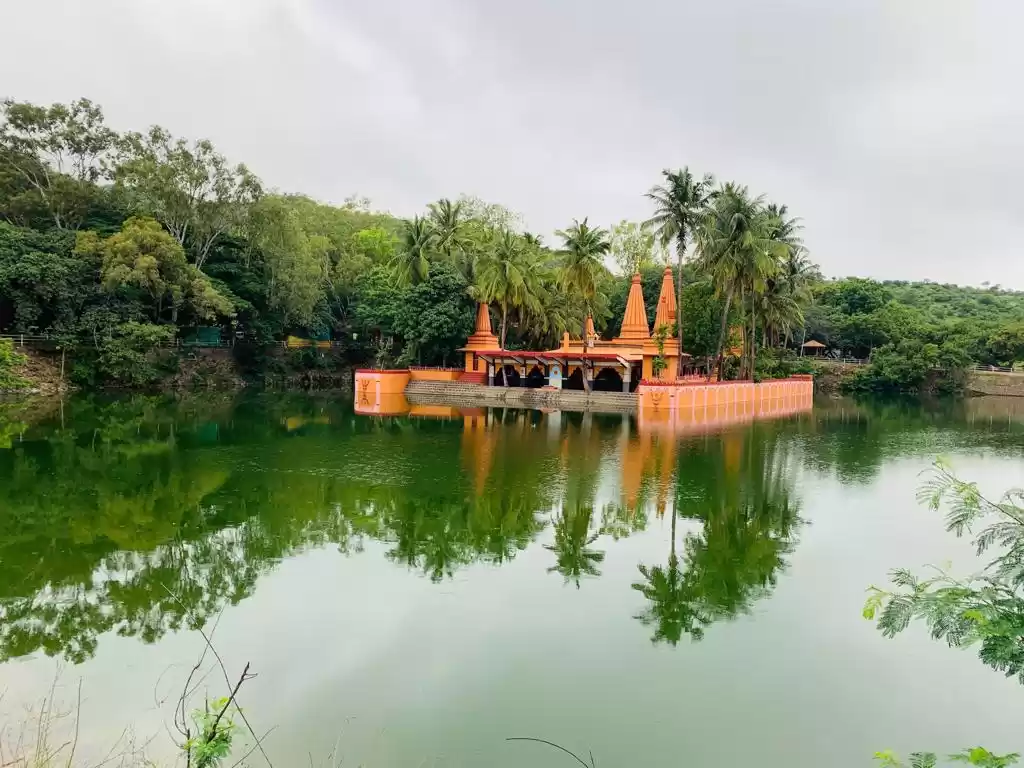Introduction
Tucked away in the heart of Madhya Pradesh lies a timeless village that once slipped into obscurity but today draws admiration from across the globe — Khajuraho. Known for its breathtaking temples adorned with exquisite sculptures, Khajuraho has become synonymous with India’s artistic and spiritual heritage.
The Khajuraho temple was built over a 1000 years ago, and is much more than a tourist attraction. They represent a golden age of art, architecture, and religious tolerance. Often misunderstood solely for their bold erotic sculptures, these temples offer a holistic view of ancient Indian life, blending the sacred with the sensual.
In this article, we trace the journey of Khajuraho from its origins under the Chandela dynasty to its recognition as a UNESCO World Heritage Site, exploring the deep symbolism, architectural grandeur, and cultural significance that continue to captivate global audiences.
Origins: The Rise of the Chandela Dynasty
Who built the Khajuraho Temples?
The Chandela dynasty, a Rajput clan that ruled central India between the 9th and 13th centuries, was the visionary patrons behind Khajuraho’s architectural marvels. Most of the temples were constructed between 950 and 1050 AD, a period that marked the zenith of Chandela power and prosperity.
Why were the temples built?
These temples were not just places of worship; they were expressions of devotion, aesthetic grandeur, and royal power. The Chandelas used temple construction as a means to legitimize their rule and promote a vision of religious harmony and cultural patronage.
Chandela’s vision:
Their commitment to spiritual and artistic excellence fostered an era where Hinduism and Jainism coexisted, and architecture flourished with extraordinary detail and depth. The temples reflected the four goals of life or Purusharthas — Dharma (duty), Artha (wealth), Kama (desire), and Moksha (liberation).
Architectural Splendor of Khajuraho
How many temples are there in Khajuraho?
Originally, 85 temples were constructed across Khajuraho, but today, only 22 temples have survived, grouped into three zones: Western, Eastern, and Southern groups.
What style are they built in?
The temples follow the Nagara style of North Indian temple architecture, characterized by soaring shikharas (spires), ornate facades, and elevated platforms (jagatis). This style offers both vertical elegance and horizontal complexity.
Notable Temples:
- Kandariya Mahadev Temple: It is the largest and most intricate Lord Shiva temple, dedicated to Lord Shiva. Its towering shikhara rises over 30 meters, adorned with over 800 sculptures.
- Lakshmana Temple: A Vishnu temple known for its symmetrical design, stunning relief work, and sanctum crowned with a prominent shikhara.
- Parshvanatha Temple: A key Jain temple, it showcases peaceful co-existence and a rich narrative style of sculpture.
Unique architectural design:
Khajuraho temples have no enclosing boundary walls, symbolizing openness to nature and spirituality. The use of sandstone, intricately carved with themes from mythology, life, and nature, speaks to the mastery of the artisans.
Sacred and Sensual: The Symbolism Behind the Sculptures
What is Khajuraho famous for?
Khajuraho is world-renowned for its erotic sculptures, which constitute a small yet significant portion of the artwork. But beyond eroticism, the temples depict scenes of war, dance, music, mythology, daily chores, and divine worship.
Why do the temples have erotic art?
There are several scholarly interpretations:
- Kama as a spiritual goal: In Hindu philosophy, Kama (desire) is considered one of the four legitimate goals of life.
- Tantric symbolism: The erotic imagery may represent the union of Shiva and Shakti, or the cosmic merging of masculine and feminine forces — a path to spiritual transcendence.
- Life’s completeness: The temples encapsulate life in its entirety — not just the divine, but also the earthly joys.
Misconceptions:
Only 10% of the carvings depict erotic themes. The broader narrative emphasizes harmony, beauty, and cosmic order, showcasing a mature, inclusive understanding of life.
Religious Coexistence: Hindu and Jain Temples
Are Khajuraho temples Hindu or Jain?
Both. Of the surviving temples:
- Most are dedicated to Hindu deities like Shiva, Vishnu, and Lakshmi.
- A significant portion, especially in the Eastern Group, belongs to the Jain faith.
Deities worshipped include:
- Shiva (Mahadev)
- Vishnu
- Parshvanatha and Adinatha (Jain Tirthankaras)
This coexistence illustrates religious tolerance and intersecting spiritual traditions, rare in other parts of the medieval world.
Decline, Abandonment & Rediscovery
What happened to the temples?
After the decline of the Chandela dynasty and successive Islamic invasions, Khajuraho lost its political and religious significance. Gradually, the temples were abandoned and reclaimed by dense forests.
Who rediscovered them?
In 1838, Captain T.S. Burt, a British engineer, stumbled upon the ruins while surveying the area. His discovery revealed a forgotten chapter of India’s artistic heritage to the world.
Archaeological revival:
The Archaeological Survey of India (ASI) later took steps to conserve and restore the temples, leading to a global appreciation of their historical value.
From Local Heritage to Global Recognition
When did Khajuraho become a UNESCO World Heritage Site?
In 1986, the Khajuraho Group of Monuments was designated a UNESCO World Heritage Site for its unique fusion of art, architecture, and spiritual symbolism.
Key revival initiatives:
- ASI Conservation: Structural restorations and protection from environmental damage.
- Academic research: Indian and international scholars have decoded symbolism, architecture, and historical context.
- Tourism promotion: Government campaigns positioned Khajuraho as a must-visit for global travelers.
Khajuraho now ranks among the top historical places to visit in India and continues to be a symbol of India’s rich cultural legacy.
Khajuraho Today: A Cultural and Tourist Hub
Is it still an active worship site?
Yes, particularly the Matangeshwar Temple, where rituals are still performed daily. It’s one of the few temples where worship has continued uninterrupted.
Best time to visit Khajuraho?
- October to March is an ideal time due to pleasant weather.
- Visitors can also experience the Khajuraho Dance Festival, held every February.
Must-see experiences:
- Sound & Light Show: Illuminates the temples while narrating their history.
- Khajuraho Dance Festival: Celebrates classical Indian dance forms against the temple backdrop.
- Archaeological Museum: Houses rare sculptures and artifacts.
- Nearby sites: Raneh Falls, Panna National Park, and Ken Gharial Sanctuary.
How to reach Khajuraho?
- By Air: Khajuraho Airport connects to Delhi and Varanasi.
- By Train: Khajuraho Railway Station is linked to major cities in Madhya Pradesh and North India.
- By Road: Well-connected by highways; taxis and buses are readily available.
Are guides and photography allowed?
Yes, certified tour guides are available, enhancing the visitor experience. Photography is permitted, though the use of professional gear might require permission from ASI.
Modern Reflections: Cultural Impact and Global Curiosity
How has Khajuraho influenced global perception of Indian art?
Khajuraho challenges the Western lens that often views Indian culture through a prudish or mystical filter. It’s an open celebration of sensuality, aesthetics, and divinity that reflects a holistic worldview, deeply rooted in ancient Indian philosophy.
Controversies and conservatism:
Despite global admiration, Khajuraho’s erotic art still sparks debate in modern India. Critics argue it conflicts with conservative social values, while supporters highlight its artistic freedom and philosophical depth.
Temples as enduring symbols of:
- Artistic freedom: Emphasis on beauty, movement, and storytelling.
- Holistic living: A balanced life that includes spirituality, love, art, and community.
- Gender and sensuality: A nuanced understanding of human relationships and female agency in ancient India.
Khajuraho continues to inspire artists, architects, and spiritual seekers worldwide.
Conclusion: A Living Legacy in Stone
Khajuraho is more than just a UNESCO site or a collection of temples — it is a living legacy carved in stone. From its spiritual origins under the Chandelas to its rebirth as a cultural icon, Khajuraho narrates a story of life in all its forms. In these temples, the divine meets the earthly, beauty meets wisdom, and sensuality meets spirituality. To walk through Khajuraho is to journey through a thousand years of Indian heritage, where every sculpture whispers stories of devotion, desire, and timeless art.



